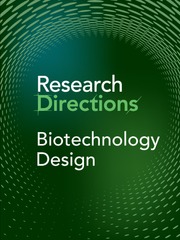Context
Human-designed objects have traditionally been constructed of relatively inert matter, and some recently examples been enhanced using stimuli-responsive ‘active matter’. Biotechnology offers the opportunity to consider living cells as constructional matter. However, living cells are distinct from familiar categories of matter because they were once independent organisms themselves. Construction with living cells involves cybernetic and behavioural concepts as well as the laws of mechanics: cells are ‘agential matter’. They make decisions and solve problems in ways that can be exploited by engineers, much as they have been exploited by evolution in creating multicellular organisms. Building with agential matter poses unique challenges, requiring the bioengineer to tame collective behaviours of cellular swarms by exploiting techniques of top-down control (behaviour-shaping signals) alongside bottom-up reconfiguration of molecular hardware. However, exploiting the multiscale competency of life offers unprecedented opportunities for engineering, regenerative medicine, and robotics. Agential materials have transformative potential but require complex design methods that go beyond our current methods of engineering and the reductionism present in biological research. We invite contributions that design, explain or test these methods.
How to contribute to this Question
If you believe you can contribute your research outputs, find out how to submit in the Instructions for authors (https://www.cambridge.org/core/journals/research-directions-biotechnology-design/information/author-instructions/preparing-your-materials). This journal publishes Results, Analyses, Impact papers and additional content such as preprints and ‘grey literature’. Questions will be closed when the editors agree that enough content has been published to answer the Question so before submitting, check if this is still an active Question. If it is closed, another relevant Question may be currently open, so do review all the open Questions in your field. For any further queries check the information pages (https://www.cambridge.org/core/journals/research-directions-biotechnology-design/information/about-this-journal) or contact this email (biotechnologydesign@cambridge.org).
Contributions
We invite contributions in the following areas:
Results
-
Demonstrations of novel applications using new approaches to agential materials in, for example, tissue engineering, biological robotics, engineered living materials etc.
-
Methods development papers which examine multiscale approaches to working with agential matter across any cell type or application going well beyond the biotechnology state of the art.
-
We also welcome null results papers that report experiments which may reveal fundamental limits of materials or processes.
Analysis
-
Conceptual frameworks for using tools of physics, artificial intelligence, behaviour science, neurobiology, and other fields to understand the collective intelligence of cells, molecular networks, and other biologicals
-
Reviews of key materials, technologies, and case studies.
-
Proposals for design frameworks or useful classification methods.
-
Horizon scanning or ‘call to action’ articles assessing relevant emerging technologies.
Impact
-
Reviews of patents and industrial applications and interest in this area.
-
Critical evaluation of existing projects, and their likely efficacy, evaluated against existing materials and methods of construction.
-
Discussions on the educational, academic, legislative, and industrial barriers to innovation.
Additional material and early outputs
We welcome a broad range of curated discussion pieces including submission of design portfolios, short polemics, position pieces, or provocations. As the question content develops, we expect this engagement to comment on the existing archive of published material.
Competing interests
The author(s) declare none.




